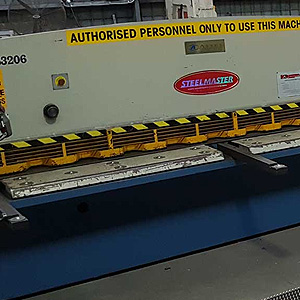The feeble paper slicing machine in a stationary closet may resemble a steel guillotine in some ways, but those similarities only go skin deep. Trust us on that fact. A little elbow grease is all it takes to slice through a thick ream of paper. A guillotining and machine forming process, though, that industrial-grade equipment is capable of cutting and shaping solid panels of metal.
Introducing Steel Guillotining
A steel shearing mechanism uses hardened blades to cut sheets of ferrous metal into accurately shaped sections. If that degree of processing muscle is hard to picture, try imagining a pair of cutting blades. They’re several meters long, so large metal sheets can be fed into the machine. A powerful drive system drops the top blade, which produces a clean cut. The process is complete. Cut-to-length sheets practically fly off this machine station when the shearing cycle flows efficiently.
A Meditation on Shear Diversity
To begin with, drive systems and blade beam types need to be assessed. Heat treated alloys with super-hardened structures are called for when sheets of steel require a well-defined cutting stroke. Added to this, a hydraulic ram or a flywheel mechanism acts as the indefatigable kinetic energy source. Meanwhile, direct drive mechanics and pneumatic drive systems operate the blades on smaller models. These are the moderately-powered machines that cut sheets of aluminium and mild ferrous panels to size.
Describing the Metal Forming Process
Steel fabrication shops are literally loaded with metal forming tools. Heavy gauge guillotines drop straight down to make a deform-free incision. A shearing station takes over by swinging a sharp metal edge through a fixed point. Cutting angles are variable thanks to these machines. Small sections of steel then move onwards for further forming. They’re band-saw cut, bent along a single plane or all three planes, and generally worked into accurate end-cycle shapes. Folding machines elevate this process and really hone the steel fabrication job until it absolutely satisfies the supplied design data, as provided by the client.
The guillotining and metal forming process in a professionally equipped machine shop caters for all kinds of fabrication work. There are the high-capacity metal folders and robust shearing tools that squat powerfully at the core of the facility. From there, the operation extends outward to incorporate bandsaws, punching tools, and many other general machining resources. Equipped with the latest gear, the larger-than-life tools can make any structural steel part or any aluminium product while complying with any client’s needs.
